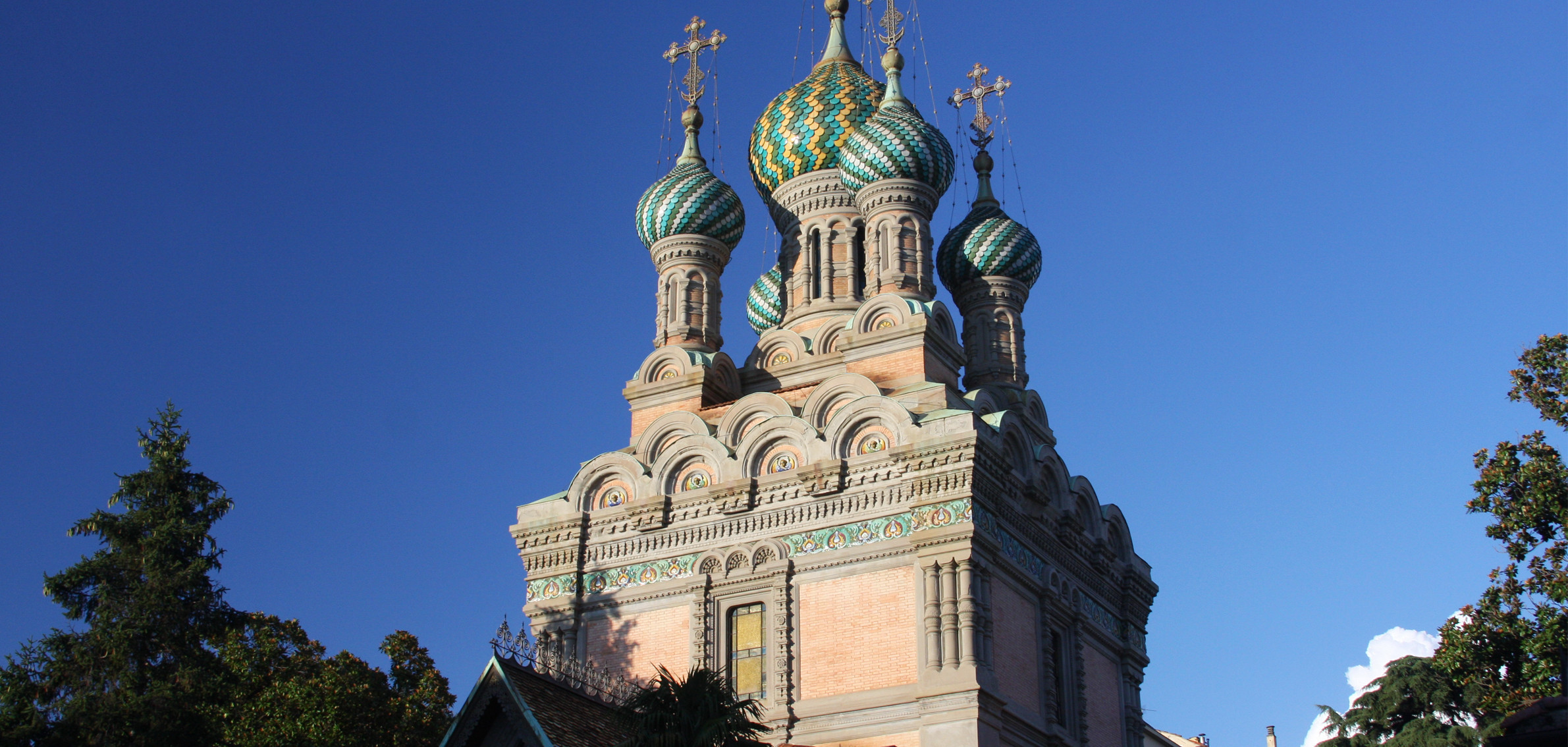
La Iglesia Ortodoxa Rusa en Florencia
A short walk from piazza della Libertà, on a street named after the
first Medici Pope, Leone X (famous for having excommunicated Martin
Luther in 1521), stands a beautiful and unexpected architectural gem.
We're talking about the Russian Orthodox Church of the Nativity of Christ and Saint Nicholas, know to the Florentines as the "Russian church".
The onion-shaped domes are visible from a distance, covered in
turquoise, yellow, green and white scales of majolica, and topped with
gilt crosses. They definetly make quite a contrast in the Florentine
skyline.
The Church was built between 1899 and 1903 to accomodate the small
Russian colony in search of a place of worship.
In fact, at the beginning of the 19th century, having no church of its
own, the Russian community of Florence congregated at the private
chapels of its more illustrious members, such as that of the wealthy
Demidoff family.
Designed by Russian architect Mikhail Preobrazhensky, it was the first Russian Orthodox church to be built in Italy.
The church layed out as a cross, is constructed in red brick and grey
stone that came from quarries near Fiesole, and is surrounded by an iron
fence with gates decorated with the double-headed imperial eagle and
Florentine lily forged by the Michelucci foundry of Pistoia.
Above the doorway, there is a Venetian-made mosaic representing the mother of God, “Znamenie”.
The magnificent wooden entrance was inspired by Ghiberti’s Gates of
Paradise, and depicts 22 scenes from the Old Testament. Its creator,
Rinaldo Barbetti, won first prize in a national exhibition in Florence
in 1861 thanks to this craftsmanship masterpiece.
The exterior
decoration is particularly beautiful at sunset, when the light reflects
on the golden decorations and makes them shine.
Inside we discover the church was built on two storeys, a typical layout
of Orthodox churches in northern Russia at the time: the lower church
is designed to be warmer in winter and was dedicated to Saint Nicholas,
in memory of the Demidoff chapel, and the upper church, cooler in
summer, was dedicated to the Nativity.
The internal decorative apparatus, with its church is decorate the
church with its frescoes, marble decoratons, Byzantine-style icons and
tall figures of saints, is truly remarkable.
To visit the church, it is necessary to make an appointment with Padre
Georgij, and it's really well worth to wait for a chance to get access
to this astonishing structure.
It's a little piece of Moscow in Florence, that cannot be absent from the list of the places to see in town.



